
Part 6: Marketing Trends of 2025 — How to Stay Ahead with Data, AI, and Experimentation
22.5.2025
4 min read
Marketing is evolving — fast. Third-party data is fading, AI is accelerating, and customer expectations are rising. This article explores how to stay ahead with first-party data, predictive analytics, and a culture of continuous experimentation.
Latest articles

Part 5: From Data to Decisions — How to Measure KPIs That Matters in Modern Marketing
15.5.2025
5 min read
You’ve launched the campaigns, but did they work? In today’s fast-moving, multi-channel marketing world, clicks and open rates don’t cut it. This article explores how to measure what really matters: business outcomes. Learn how to run lift tests, track incremental impact, and build feedback loops that turn your customer data into decisions — not just reports.
Read now
Part 4: Beyond Segmentation — How to Orchestrate Real-Time Customer Journeys
8.5.2025
4 min read
Activate customer data in real time for omnichannel marketing success. Learn how to sync audiences across channels to deliver timely, personalized experiences that boost ROI and reduce wasted spend.
Read now
Part 3: Unlocking Growth with Smart, Behavior-Based Segmentation
1.5.2025
5 min read
Discover why outdated, static segments fall short in today’s dynamic market. Learn how real-time, behavior-driven segmentation boosts conversions, minimizes wasted ad spend, and keeps your marketing efforts agile and effective.
Read now
The Ultimate Martech Playbook for Personalized, Omnichannel Experiences
22.4.2025
7 min read
Explore the new martech playbook built on real-time signals, personalized experiences, privacy-first design, and seamless cross-channel orchestration. A must-read for marketers reshaping customer journeys in 2025.
Read now
Part 2: How to Build Unified Customer Profiles for Powerful Personalization
17.4.2025
6 min read
Discover how unified customer profiles transform fragmented data into actionable insights. Learn to harness identity resolution, enrich behavioral data, and ensure compliance to drive personalized marketing and build lasting customer trust.
Read now
Part 1: Why Customer Data Is the New Marketing Currency (And How to Use It)
9.4.2025
5 min read
In a world of saturated digital noise, brand success now hinges on how effectively they harness customer data to deliver relevance at scale. Customer data—especially zero- and first-party signals—has become the new marketing currency, fueling personalized engagement while meeting rising privacy expectations.
Read now
Leveraging Data Partnerships in BFSI to Build Privacy-First Customer Experiences
8.4.2025
5 min read
Data partnerships have become more than a tactical play—they’re a strategic necessity. In this article, we explore how banks and insurers are leveraging privacy-first data collaboration to unlock hyper-personalization, improve credit scoring, streamline KYC, and embed their services in the platforms customers already use daily.
Read now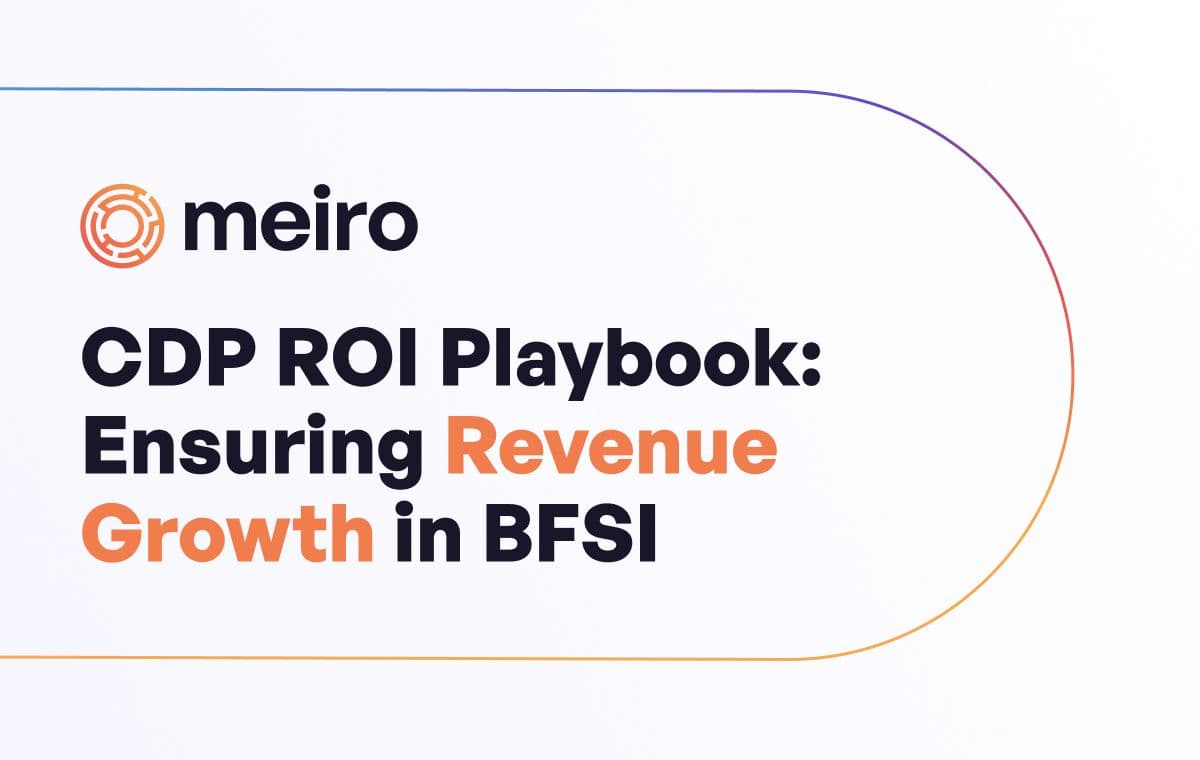
How Can CDPs Help BFSI Improve Customer Experiences and Grow Revenue
24.2.2025
6 min read
Discover how Customer Data Platforms (CDPs) help BFSI organizations break data silos, enable real-time personalization, optimize marketing efforts, and drive revenue growth. Learn best practices for CDP implementation and how to improve CLV, CAC, and fraud detection in the BFSI industry.
Read now
How to Achieve PDPL Compliance Without Compromising Customer Experience
27.1.2025
4 min read
Meiro empowers businesses in Saudi Arabia to comply with PDPL while delivering seamless, personalized customer experiences. Learn how our data solutions ensure privacy, security, and engagement without compromise.
Read now
Strategic CDP Implementation Guide: Insider's Tips for Maximizing ROI
20.1.2025
8 min read
Customer Data Platforms (CDPs) transform e-commerce by unifying data and enabling real-time personalization. In this article, discover expert strategies to enhance engagement, boost ROI, and implement CDPs successfully.
Read now
How to Lower Customer Acquisition Cost with CDP and First-Party Data
13.1.2025
4 min read
In today’s rapidly evolving digital landscape, marketers face growing challenges—rising customer acquisition costs, stricter data privacy regulations, and diminishing returns from third-party data sources. To navigate these hurdles and drive impactful results, businesses must unlock the power of first-party data with CDP technology.
Read now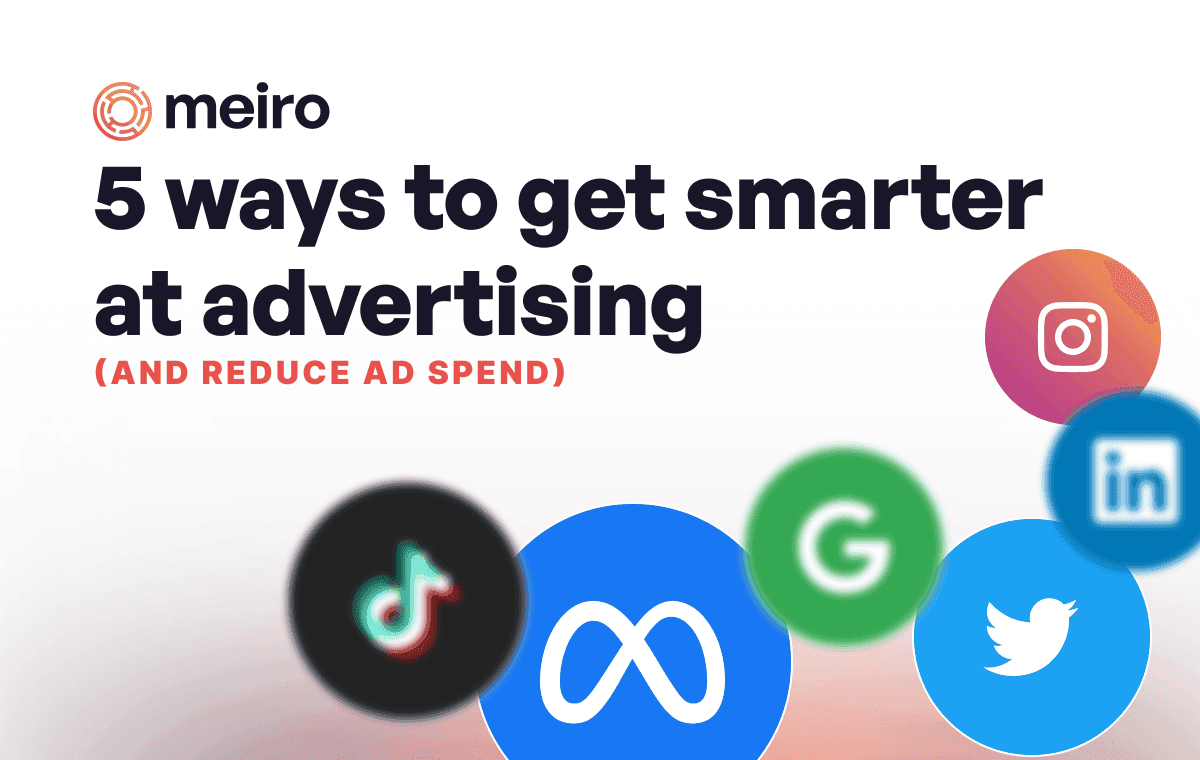
5 Ways to Get Smarter at Advertising: Improve ROAS While Reducing Ad Spend
4.11.2024
6 min read
Advertising can feel like pouring money into a black hole if it’s not done right. But with a few savvy strategies, you can cut through the noise, improve ad performance, and get better returns on your ad spend—all without relying on an agency. Here's how to boost ROAS (Return on Ad Spend) and make every ad dollar count.
Read now
AI in Marketing: Balancing Experimentation with Driving ROI
23.10.2024
6 min read
Discover how artificial intelligence (AI) is transforming marketing, from personalized recommendations to predictive analytics. Learn strategies for balancing AI-driven experimentation with long-term ROI through real-world case studies, insights, and best practices.
Read now
Navigating Personal Data Protection Laws with Meiro: OJK Compliance for BFSI
25.9.2024
4 min read
Meiro's mission is to ensure our clients can meet data privacy obligations with confidence. For businesses operating in the BFSI (Banking, Financial Services, and Insurance) sector, navigating OJK regulations is critical to maintaining trust and compliance, and Meiro is here to guide that journey.
Read now
Meiro CDP Achieves AWS Foundational Technical Review Certification and Joins AWS Partner Network
24.9.2024
3 min read
The AWS Foundational Technical Review (FTR) is more than just a milestone—it’s a rigorous evaluation that sets the highest standards for security, reliability, and performance. By completing this review, Meiro has proven its technical soundness and readiness to meet the needs of businesses at any scale and demonstrated that our composable Customer Data Platform (CDP) is not only equipped to meet today’s challenges but is also designed to evolve with the demands of tomorrow’s digital landscape.
Read now
Beyond the Hype: Meiro's AI Hackathon Delivers Real CDP Value
29.7.2024
7 min read
In the rapidly evolving landscape of AI and data management, it's easy to get caught up in the hype. At Meiro, we recently took a step back and asked ourselves: How can we harness AI to add real value to our customer data platform (CDP)? This question led us to organize an AI-focused hackathon that set us apart from the crowd.
Read now
July Update: Better version of Mobile SDK
24.7.2024
2 min read
This upgrade focused on the Mobile SDK channel, bringing real-time insights and seamless mobile engagement straight to your fingertips.
Read now
Meiro Achieves "High Performer" and "Easiest To Do Business With" Badges in G2’s Summer 2024 Report
4.7.2024
3 min read
In G2's Summer 2024 report, Meiro was awarded multiple "High Performer" badges and an "Easiest To Do Business With" badge! This achievement in the Customer Data Platform (CDP) category comes from Meiro’s exceptional satisfactory ratings and is a testimony to our client-centric approach.
Read now
May Update: Analyse cross-device customers' journeys in one view
27.5.2024
2 min read
Introducing the newest feature, Funnels, a no-code analytical tool to help you understand cross-device customer journeys and optimise the performance of your marketing campaigns.
Read now
March update: Better version of Mobile Push
14.3.2024
2 min read
This upgrade focused on the Mobile Push channel, streamlining your campaign management and adding functionality for optimizing both customer experience and engagement.
Read now
New feature to help find more customers: Lookalike Segments
2.2.2024
3 min read
Meiro’s Lookalike Segments are made to broaden your marketing initiatives' reach, relevance, and Conversion Rates by leveraging CDP attributes and historical behavior to find more users within your CDP database who share characteristics similar to your target audience profiles, enhancing the precision of your targeting.
Read now
Milestone Moment: Meiro secures strategic $3M pre-series A funding to drive global growth 🎉
16.1.2024
4 min read
Meiro has successfully secured US$3 million in an over-subscribed pre-Series A round, led by Southeast Asian VC firm Wavemaker Partners, with participation from angel investors at Singapore-based Angel Central. This marks Meiro’s first strategic funding round following five years of robust self-funded organic growth and profitability.
Read now
The best of 2023: Recap of great product innovations
5.1.2024
6 min read
In 2023, we concentrated on enhancing activation features within our data management technology. These updates underscore our dedication to expanding marketing automation capabilities and delivering impactful omnichannel communication. Throughout the year, we introduced key innovations like Mobile Push, a revamped User Interface, Email Channel integration, and an AI-powered content assistant.
Read now
How to maximize ROI of a Customer Data Platform through incremental revenue
5.12.2023
7 min read
Businesses strive for efficient marketing and measurable returns, and CDPs unlock revenue by leveraging unified customer data in marketing. This blog explores how a well-implemented CDP can drive significant growth, delivering tangible results across industries.
Read now
Meiro product milestones: recap of H1 2023
20.11.2023
3 min read
Discover Meiro's strides in H1 2023: 20 new features, enhanced UI, real-time notifications, seamless data integration & AI-driven content. Shaping experiences, one innovation at a time.
Read now
Debunking the “Three Year Lie”: A New Approach to Retail Digital Strategy
14.11.2023
5 min read
If you’re one of the many marketers who has been told by an external agency partner that results from your data intelligence, personalisation and customer experience investments will take three years - consider sacking your agency. Or at least ask a series of hard questions.
Read now
Meiro Recognized as One of the Top 10 Big Data Companies in Singapore of 2023
25.8.2023
2 min read
Meiro is named one of the Top 10 Big Data Companies in Singapore, acknowledged for exceptional services and solutions at the Top Asia Corporate Ball 2022/2023.
Read now
The new Google Analytics 4 – Big change for marketers?
16.6.2023
6 min read
Think web traffic analysis, and most would first think of Google Analytics – the golden standard for the category for years but why it is not enough in today's web world?
Read now
Data-driven customer journeys with Meiro’s new partner, Labrys
14.6.2023
3 min read
Meiro has formed a strategic partnership with Labrys to jointly deliver data-driven, personalized customer experiences.
Read now
The power of advanced customer identity resolution in driving exceptional marketing results with CDP
14.6.2023
10 min read
Understanding and engaging customers across devices and channels is complex. Yet, with customer identity resolution, enhanced insights, engagement, and ROI are achievable. Learn how it drives CLV and ROI growth.
Read now
Data warehouse vs. CDP: What are the differences and synergistic potential
4.4.2023
3 min read
Find out the difference between a CDP and a data warehouse and how to apply these technologies to create architecture that best reflects your business objectives.
Read now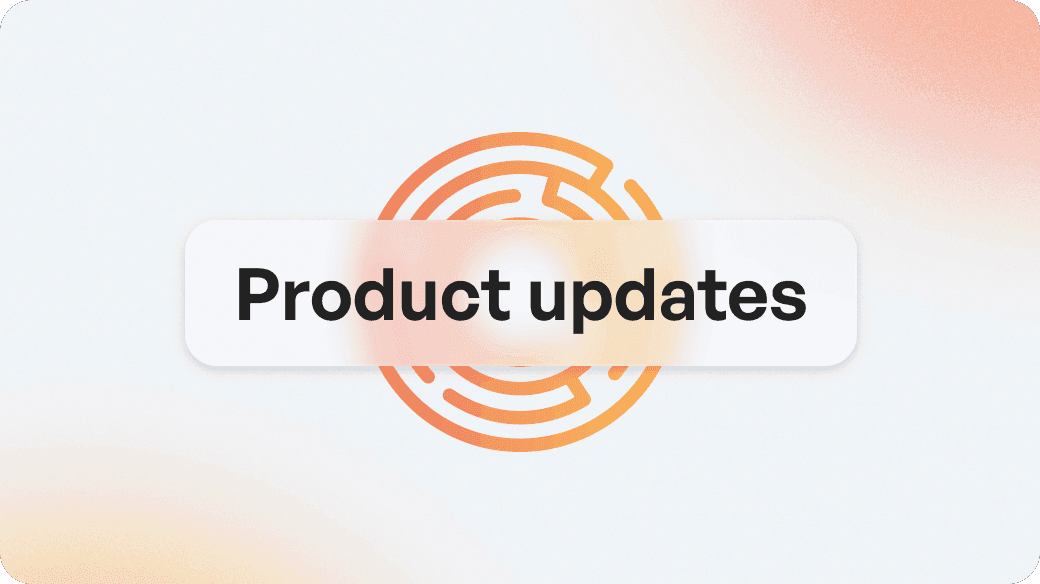
Meiro Business Explorer: Diagnostic reports and Web Banner improvements
18.3.2023
2 min read
We released a new update that helps with diagnosing problems with profile stitching and assists with advanced usage of web banners.
Read now
Meiro Business Explorer: New DM channel, Mobile Push, is live
15.3.2023
3 min read
To increase app retention and create marketing opportunities, businesses relying on a mobile app to interact with customers must utilize personalized push notifications.
Read now
Meiro has a new strategic partner Reprise Digital
12.3.2023
3 min read
Reprise Digital is a global leader in performance marketing and delivers tools and services that analyze customer behavior and provide data-driven marketing solutions. Reprise Digital is the world’s largest performance marketing network, with over 3,000 experts in 68 offices in 48 markets.
Read now
Meiro Business Explorer: Modifications, segment export, and access to attributes
12.2.2023
1 min read
We released a new update that will help you to navigate the customer data platform.
Read now
Meiro product updates: website personalization with web banners
11.2.2023
3 min read
Personalization is a must. It is known that marketers that use personalized web experiences are getting higher returns in performance and responses. Personalization increases revenue, sales, conversion and ensures exceptional customer experience.
Read now
Meiro Integrations: Klaviyo
24.1.2023
1 min read
A new addition to Meiro Integrations – Klaviyo.
Read now
6 Ways to personalize your push notifications with CDP data insights
5.1.2023
6 min read
In this article, we present 6 best practices for personalizing mobile push notifications like a pro in 2023. Read on to learn how you can utilize data brought to you by Customer Data Platform to craft bespoke and relevant user journeys with mobile app messages.
Read now
Meiro Business Explorer: IP address blacklisting for web banners
21.12.2022
1 min read
Another improvement of Meiro Business Explorer gives our users more options when creating web banners and using condition operators.
Read now
Meiro product updates: insights with analytics, log in through Okta to Meiro
13.12.2022
2 min read
More and more updates are coming from Meiro. As we listen to clients, we learn more about what problems they come across and how we can solve them.
Read now
Meiro Business Explorer: Web Banners can now be safely deleted and restored. Audience API returns customer segments
28.11.2022
2 min read
Sometimes it's needed to delete something – either you made a mistake, or you want to clean up a little bit and get rid of the testing stored in Meiro CDP. Now when you do, you don't have to worry about your work being lost forever.
Read now
GDPR - The Canary In a Privacy Mine. Is Your Company Ready?
22.11.2022
5 min read
If your organization handles personal data, you will need to have a deep understanding of GDPR requirements and how to be compliant.
Read now
Meiro Business Explorer: reporting about users' activity
20.11.2022
1 min read
With Meiro CDP you can see valuable data about the activity of your account users.
Read now
Meiro Business Explorer: segment ID in the segment detail, updates in the Setup tab
7.11.2022
1 min read
Find quickly ID of your segment that is now displayed in the segment detail.
Read now
Meiro Business Explorer: embedded web banners
21.10.2022
1 min read
Welcome the new channel for activation that combines pop-up web banners and embedded web banners in an orchestrated omnichannel personalization strategy.
Read now
Meiro Integrations: new Snowflake Loader
8.10.2022
1 min read
A new bulk loader optimized for high-volume loads of your data assets from Meiro into the Snowflake data warehouse or data lake.
Read now
Meiro Business Explorer: Web banner productivity improvements
21.9.2022
1 min read
This release is all about improving your productivity with web banners personalization. The template gallery contains a selection of HTML templates frequently used across industries.
Read now
Meiro Integrations: new TikTok integration
15.9.2022
1 min read
TikTok integration
Read now
Meiro Integrations: new WooCommerce integration
18.8.2022
1 min read
WooCommerce integration.
Read now
Meiro Business Explorer: More protection for sensitive data
31.7.2022
1 min read
Control access to personal information across the Meiro environment.
Read now
Meiro Integrations: new Salesforce Commerce Cloud integration
27.7.2022
1 min read
Salesforce Commerce Cloud integration.
Read now
Meiro Customer Data Platform has formed a strategic partnership with Ameex Technologies
26.7.2022
4 min read
Meiro Customer Data Platform has formed a strategic partnership with Ameex Technologies to jointly deliver data-driven, personalized customer experiences.
Read now
Ad efficiency in the age of connected customer data
30.6.2022
4 min read
During Big Data & AI World event, a panel of experts in adtech are discuss advertising efficiency in the post-cookie world, and what’s happening in the privacy space.
Read now
Meiro Integrations: Facebook Custom Anonymous Audience loader
2.6.2022
1 min read
New Meiro integration with Facebook Business Manager.
Read now
Case study: How a CPG brand solved the third-party cookie problem
29.5.2022
6 min read
This is last part of a three-part blog series that covers all that you need to know about cookies and the third-party cookie ban titled “Cookies 101: Bulletproofing for the 3rd party cookie ban”.
Read now
Meiro Business Explorer: web banners - added search, sorting & creation date
19.5.2022
1 min read
Web banners tab: search by name, added creation date, sort.
Read now
The Apple Email Tracking Block – And a new strategy for your email analytics
7.5.2022
5 min read
Apple updates regarding increased privacy of email tracking as well as new iOS 15 update which brings transparency of personal data usage. It also brings a bit of fear to marketers.
Read now
How does the web cookie work & The future of third party cookies
1.5.2022
13 min read
This is part of a three-part blog series that covers our workshop we call “Cookies 101: Bulletproofing for the 3rd party cookie ban”. In this first article, we have Neil, our in-house Cookie Master, explain what an HTTP cookie is, what this third-party cookie ban is all about, and how it will impact marketing (specifically digital marketing) and marketers (specifically digital marketers).
Read now
Meiro Integrations: new Twitter Ads Audience integration
21.4.2022
1 min read
Load segmented audiences to Twitter Ads Audiences.
Read now
Meiro Business Explorer: web banners & custom close button, unlimited width
18.4.2022
1 min read
Web banners close button editor and unlimited width for HTML and images.
Read now
CDP Institute recognized Meiro as a Real CDP
14.4.2022
2 min read
Most recently, Meiro is proud to be recognized as the "real CDP" and validated by the CDP Institute, a respected, independent industry analyst. Besides, CDPI has ranked Meiro as a top-performing and the most featureful Customer Data Platform.
Read now
Meiro product updates: reporting dashboards
28.3.2022
3 min read
“Data-driven decision making” (DDDM) is getting more important these days, especially in the frequently changing times. But how do we achieve it? How to make data less scary for non-data teams? How do we make it useful without overloading it?
Read now
Meiro Business Explorer: web banners custom positions, hide minimized web banner on URLs, add width to images, animations
21.3.2022
1 min read
Multiple new features for web banners
Read now
Meiro partners up with Adjust to create a comprehensive customer experience across devices
13.3.2022
3 min read
Meiro has partnered with Adjust, a global app marketing platform, to help brands create a comprehensive customer experience across devices
Read now
PDPA: Why every business in Singapore needs to take data more seriously!
11.3.2022
5 min read
(https://www.jdsupra.com/legalnews/what-you-should-know-about-singapore-s-4078482/) is worth taking immediate action – or you might just have to face the consequences.
Read now
The solution to a third-party cookie ban
16.2.2022
10 min read
This is part of a three-part blog series that covers all that you need to know about cookies and the third-party cookie ban titled “Cookies 101: Bulletproofing for the 3rd party cookie ban”.
Read now
Meiro product updates: identity graph
12.2.2022
5 min read
Meiro CDP has the best in class identity resolution. See how stitching customers profiles work and why our technology is going to save the day in the cookie-less future.
Read now
Meiro Business Explorer: "Help" section, web banners, search limitations
11.2.2022
1 min read
Redesigned "Help" section. Added more positons to web banners.
Read now
Why Every CMO Needs To Be A Wartime CMO Today
4.2.2022
6 min read
The current crisis has drastically changed conditions in the market and the course of the future. How can CMOs adopt wartime-like strategies and conquer the black swan event?
Read now
Meiro Integrations: Salesforce Marketing Cloud loader , Google Ads connector update, Criteo loader update, Smartemailing trigger loader update
25.1.2022
1 min read
Salesforce Marketing Cloud loader. Updates in other components.
Read now
Meiro Business Explorer: minimized web banner as first, trigger web banner after some pageviews
28.12.2021
1 min read
Show minimized web banner as first. Trigger web banner after a chosen number of pageviews.
Read now
Could Your Next Best Hire Be a Marketing Scientist?
21.12.2021
5 min read
There is a growing demand for Marketers who can act as a bridge between data, marketing and statistics. Companies who hire and train employees in these skills will reap the most benefits.
Read now
Enable your customer data in Facebook, Google Ads now in Twitter Ads
29.11.2021
2 min read
The trend in advertising is perceptible. Companies such as Facebook (Meta), Google, or Seznam.cz are allowing you to upload your own customer list. Your own data actionable in advertising systems mean precision in your marketing as well as an increase in the marketing ROI.
Read now
Meiro Business Explorer: minimized web banners and promo codes
1.11.2021
1 min read
Minimized versions of web banners
Read now
Meiro Business Explorer: set web banner with delay & condition names changed, license usage.
29.10.2021
1 min read
Global settings for limiting the display of all web banners to the user after the number of page views per session. Condition names changed & grouped.
Read now
Meiro Integrations: Facebook Pixel connector
27.10.2021
1 min read
Facebook Pixel connector has been released
Read now
What Benefits Does Marketing Scientist Bring To Your Organization?
17.10.2021
7 min read
In the previous article, we have established why your company needs a marketing scientist. Now let’s take a closer look at what this person does on a daily basis and how this benefits your company.
Read now
Meiro Business Explorer: featured segments, custom segments, image upload for web banners, email notifications per day
14.10.2021
1 min read
Instead of the email notification sent per action, Meiro will send daily email updates. The Featured Segments tab enables to keep all prebuilt segments under one, separated tab.
Read now
Deliver a comprehensive experience online and offline through OOH with Meiro’s new partner, Moving Walls
10.10.2021
3 min read
Meiro CDP has partnered with Moving Walls, an adtech company offering Out of Home media with digital & programmatic capabilities
Read now
Customer Experience – The unlikely cure to the slowdown
27.9.2021
6 min read
The studies showed that CX Leaders performed better than the laggards, and even came out on top as compared to the broader market.
Read now
Meiro Integrations updates (0.53.0)
15.9.2021
1 min read
With the new release, please welcome two new integrations: Zoom connector and Sendinblue loader.
Read now
Which type of a tech marketer are you?
17.8.2021
6 min read
There are only a million ways to build martech stack. The martech stacks are made by the Marketer and it is a reflection of more than just your company’s objectives, but also your individual style of working and your focus.
Read now
Meiro Integrations: LDAP connector; Bukalapak, Sklik loaders
11.8.2021
1 min read
* LDAP connector * Bukalapak loader * Sklik loader
Read now
Meiro Integrations: Mailkit loader
22.7.2021
1 min read
The new components Mailkit loader has been released.
Read now
We are presenting at the GITEX Global conference 2021 in Dubai
21.7.2021
2 min read
I will be joining this AI pot in Dubai to talk about not only data but also the working environment of the data world with our hugely successful non-profit project She Loves Data.
Read now
How to gain customer loyalty and use data to drive marketing ROI
20.7.2021
5 min read
Manish Gambhir from Meiro & Ajit Pawar from Adjust spoke with Shantanu Dasgupta and presented essential concepts for their audience to learn more about how they could ensure their digital transformations showed results.
Read now
Meiro Business Explorer: new notification center
9.7.2021
1 min read
The new notification center on the current homepage will help to stay up to date with all changes.
Read now
Deliver a great customer experience with Meiro’s new partner, GPI
24.6.2021
2 min read
We are glad to announce that we have a new partner on board with us – PT Global Poin Industries (GPI) who is based in Indonesia and operates Indonesia’s leading coalition loyalty, GetPlus.
Read now
Meiro Business Explorer: refresh segments
6.6.2021
1 min read
Refresh segment button in each segment enables to decide when you wish you segment to be recalculated.
Read now
Meiro product updates: smart segments, identity access management, more integrations
17.5.2021
3 min read
We are constantly working on our product and developing new features based on business needs. Here is a short update on what we have worked on and you might not know it.
Read now
Meiro Business Explorer: relative datetime in web banners
14.5.2021
1 min read
Relative datetime conditions in web banners.
Read now
Meiro Integrations: Snowflake connector
13.4.2021
1 min read
A new component Snowflake connector has been released.
Read now
Meiro Business Explorer updates (v2021.04.12)
12.4.2021
1 min read
This time small adjustments and fixes: added tooltips across the product and fixed colors in the identity graph in customer profiles.
Read now
Meiro Business Explorer updates: personalization with web banners
1.4.2021
2 min read
Meiro Business Explorer opens a new chapter of website personalization with web banners.
Read now
Scientific Marketing - The Best Form of Marketing
26.3.2021
6 min read
Have you ever thought about it? That the _only_ way to improve _anything_ is to measure it first? Because only when you measure your current effort, you’re able to say if your new effort is better or not. Without effective measurement, there’s nothing to compare.
Read now
Meiro Integrations: SmartEmailing Trigger loader
22.3.2021
1 min read
A new component: SmartEmailing Trigger loader
Read now
Meiro Integrations: Oracle database connector & Facebook Conversion loader
9.3.2021
1 min read
2 new components have been released: Oracle database connector and Facebook Conversion loader
Read now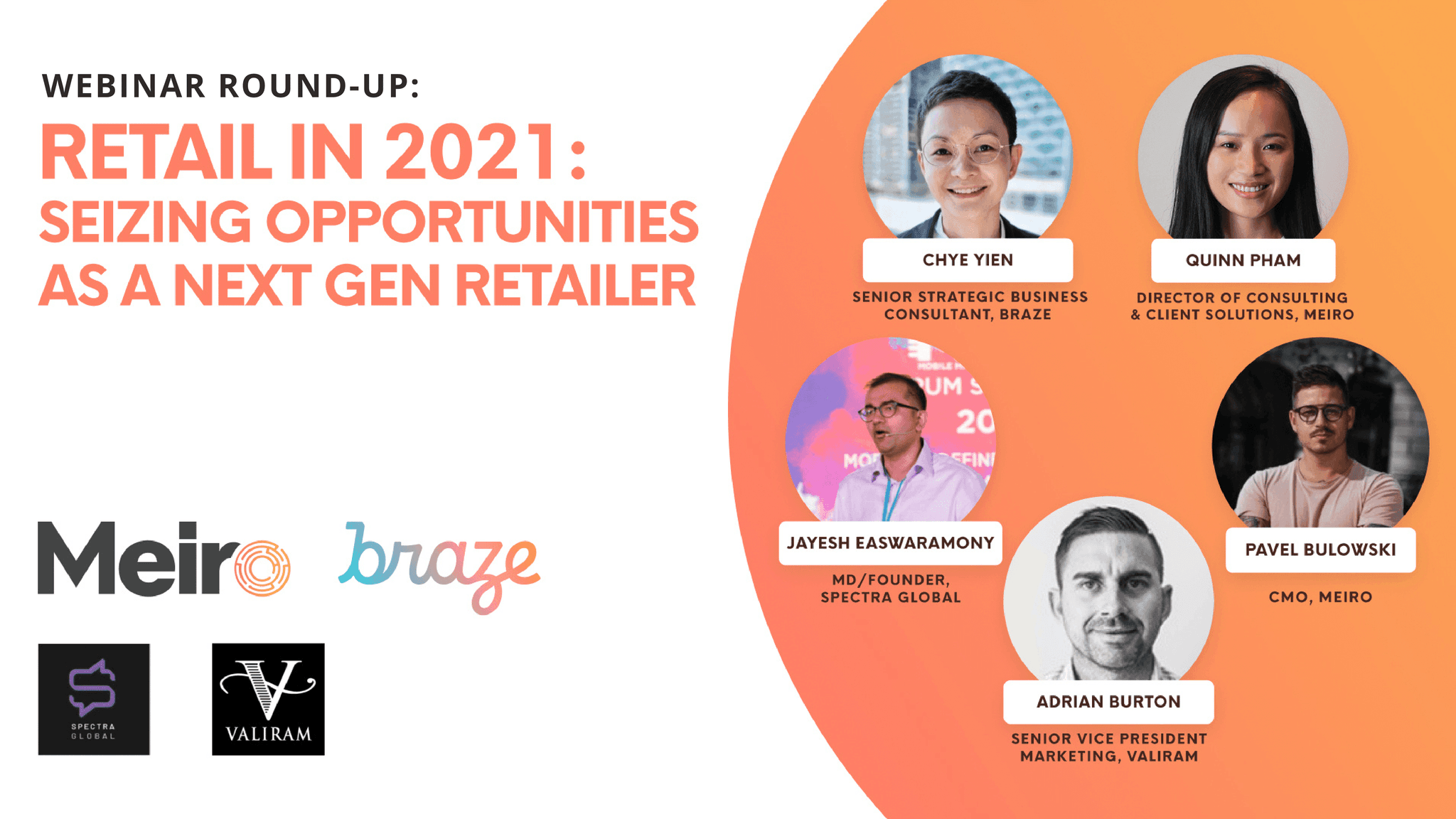
How to seize opportunities as a next-gen retailer
1.3.2021
9 min read
The question today is no longer about moving from offline to online but about staying online and establishing online and offline marketing activities that are aligned and relevant.
Read now
Meiro Business Explorer updates: reporting dashboards
1.3.2021
1 min read
We are closing the stack from the top end by adding full data visualization and reporting layers.
Read now
Banks Vs Fintech: How banks can turn competition into an opportunity with CDP
26.2.2021
7 min read
The rise of fintech it seems is only just beginning. According to a study by Google, the worldwide digital financial services market is set to hit $786 billion in 2021, and in Singapore alone is set to hit $130 billion. Should such exponential growth be reason enough for banks to be worried?
Read now
Meiro Integrations: Youtube Insights connector, SmartEmailing loader
18.2.2021
1 min read
2 new components: Youtube Insights connector SmartEmailing loader
Read now
Meiro Business Explorer updates- favorite customers
15.2.2021
1 min read
Add customer profiles to favorites. Browsing through customer profiles and wish to keep some of them for later? No worries, just add the chosen customer profiles to favorites. You will see favorite customer profiles listed in the Customers tab.
Read now
Meiro Integrations: SmartEmailing connector & Criteo loader
9.2.2021
1 min read
Two new components have been released: SmartEmailing connector and Criteo loader
Read now
The future of advertising & how you can pivot without cookies (not just as a publisher)
21.1.2021
8 min read
Learn about the future of advertising and business in the post-cookie worked from this eminent panel. Hosted by Gavin Floyd, Head of Consultancy at Breathe APAC, the panel also included personalities from across the industry such as Devendra Shivhare – Head of Engineering at SPH, John Thankamony – Client Partner at Dentsu, and Rica Raubenheimer – Digital Product Manager at South China Morning Post.
Read now
Beat the 3rd party cookie ban, here's the plan
19.1.2021
10 min read
Google finishes what they set out to do – ending support for 3rd party cookies in phases, and changing the data landscape forever.
Read now
Meiro Events Monitoring
15.1.2021
1 min read
* Track all your events collected for the last 1 hour. * Inspect payloads collected. * Set up alerts to get email notifications if events you expect to collect do not appear.
Read now
Meiro Business Explorer updates (0.58.0)
28.10.2020
1 min read
In this release small fixes and updates. Also, see preview of attributes in the segment builder on hover.
Read now
What happens when Email Marketing meets the power of First-Party Data
16.10.2020
5 min read
Of the many twists of recent events, surely one is the ‘return’ of the classic marketing standard - Email Marketing. Often thought to reach its demise over the last few years, Email has stubbornly stayed alive and relevant. And in 2020, it has become a level playing field for new online migrants and established brands alike.
Read now
Meiro Business Explorer updates (0.51.0-0.57.0)
14.10.2020
1 min read
Beside bug fixes and backend changes that make Meiro quicker and more reliable, we have also couple of interesting new features to announce: Personalize your insights tab: Choose insights that matter.
Read now
Meiro Integrations updates (0.55.0)
17.9.2020
1 min read
With this new release, please welcome new integration: Optimizely connector.
Read now
Meiro Business Explorer updates (0.50.0)
8.9.2020
1 min read
For those who wonder how Meiro creates customer profiles, we would like to present the Identity Graph.
Read now
Meiro Business Explorer updates (0.49.0)
27.8.2020
1 min read
Never setting up Meiro Business Explorer was so quick and easy! Now it is all possible with a few clicks.
Read now
Meiro Integrations updates (0.49.0)
6.8.2020
1 min read
With this release new itnegration and ipSCAPE connetor that allow you to connect data from ipSCAPE cloud commonly used by companies like Tic Toc, Infosys or Hunday.
Read now
Meiro Integrations updates (0.48.0)
21.7.2020
1 min read
With Meiro Integrations 0.48.0, we are introducing the new Kafka loader for Apache Kafka.
Read now
Of ballpoint pens & digital transformations: Lessons your brand can learn from Muji’s collapse
21.7.2020
7 min read
This is the story of my quest to find a way to buy my favourite pen, the trials, tribulations and lessons I learned along the way. All of which I hope can help can teach a thing or two to brands in their own journey to the digital realm.
Read now
Meiro CDP, Blink CX & Home Credit shared their know-how on Customer Segmentation
10.7.2020
5 min read
In today’s world, digital transformation has taken precedence in organisations at scale. But what’s interesting is that it’s not the organisations driving this change – but instead the consumers.
Read now
Meiro Integrations updates (0.47.0)
17.6.2020
1 min read
Directed Acyclic Workspaces’ Graph allows you to organize directed acyclic graphs for your workspaces.
Read now
Meiro Business Explorer updates (0.47.0)
17.6.2020
1 min read
Please welcome insights with a new fresh look and possibility to expand all insight tiles.
Read now
Survival guide for the 3rd party cookie apocalypse
27.5.2020
4 min read
It’s definitely clickbait to say that Google killed the cookie. The truth is, they made a landmark move only against ‘bad’ cookies – but in favour of user privacy.
Read now
Meiro Business Explorer updates (0.44.0)
21.5.2020
1 min read
Chose to which segment destination you will grant your users access to.
Read now
Meiro Business Explorer updates (0.43.1)
20.5.2020
1 min read
This time we would like to introduce a small update with a big impact on your segmenting powers: additional condition negation in the segment builder.
Read now
Meiro Integrations updates (0.44.0)
14.5.2020
1 min read
Filtering Disabled/ Enabled workspaces directly in the Workspaces tab.
Read now
Meiro Integrations updates (0.43.1)
13.5.2020
1 min read
Log in to Meiro Integrations through the Okta platform. To set up Okta contact the Meiro team.
Read now
Meiro Business Explorer updates (0.42.0)
11.5.2020
1 min read
With this release, we are introducing Smart Segments that will help you to get quick access to the most common segments available for your customer's database and attributes.
Read now
Meiro Integrations updates (0.42.0)
11.5.2020
1 min read
This time multiple adjustments in the Workspaces tab, as well as new Gmail attachment integration.
Read now
Meiro CEO recognized for driving diversity in Singapore
10.5.2020
3 min read
The CEO of Meiro, an avid data and diversity advocate with a computer science degree was featured in the 2020 SG 100 Women in Tech.
Read now
Meiro Business Explorer updates (0.41.0)
8.5.2020
1 min read
With the new release of Meiro Business Explorer, we would like to introduce customizable user definitions. Pick and chose the right access for the right people and create the user of your choice tailored to your needs!
Read now
Meiro Business Explorer updates (0.38.0 and 0.38.1)
7.5.2020
1 min read
Set up an additional attribute of your choice in the Customers tab. The attribute can be set by the administrator in the Settings tab
Read now
Meiro Business Explorer updates (0.37.0)
6.5.2020
2 min read
In this release Customer Definition tab that allows excluding customers without certain attributes present and profile stitching attributes.
Read now
Demystifying Adtech & Martech – Webinar with She Loves Data & Meiro
3.5.2020
5 min read
She Loves Data – the volunteer-run, non-profit organization run by Meiro founders, led a webinar to demystify adtech & martech buzzword terms for women in marketing & related occupations and open new vistas of opportunities to them.
Read now
How Apple did (not) kill a 330B$ industry
19.4.2020
7 min read
The upheaval of Apple killing IDFAs has sent marketers into their bunkers fearing a post-apocalyptic market change. Though we’re here to tell you why this change just might be a great thing.
Read now
Click and Mortar – The new reality for retail
16.3.2020
10 min read
It’s been a tough time for retail, even for the biggest players like Zara who announced its net profit fell 70% in 2020. An industry that once stood solid in its brick and mortar foundations with bustling crowds now seems shaken by the developments of the past few years.
Read now
What is a Customer Data Platform (CDP)?
1.3.2020
7 min read
One could say that marketing technology is a world full of alternative facts. Sales decks boasting functionality that the product's developers often never heard of, not to mention the complexity of the growing tech vendor landscape. No wonder the user get easily confused about what it what, how does one technology category overlap with this one and differs from that one.
Read now
The CRM is dead. Long live the CDP
28.2.2020
7 min read
Why do you need a CDP if you already have a CRM? Because a CDP can make the difference that a CRM simply couldn’t.
Read now
Don’t rely on Marketing Cloud to Activate Your Customer Data
10.2.2020
4 min read
Customer data platforms are doing now what marketing clouds have promised for a decade - real-time customer data activation based on rich customer profiles.
Read now
Types of Customer Data Platform and Which Would My Business Need?
1.2.2020
5 min read
Manage your customer data better and find the type of Customer Data Platform that best suits the needs of your business and organisation.
Read now
Digital Transformation In 2020. From Buzzwords To Business Reality
15.1.2020
6 min read
Digital 2020 is going to be about the same things everyone’s been talking about over the last decade. The only difference? No more talk. This is the year that digital finally gets real – Every technology that’s been fun to banter about at conferences will make an impact on the playing field of commerce.
Read now
Is Customer Data Location More Important Than Data Control?
12.11.2019
3 min read
Location of the data is just one aspect to consider. The operating model of your CDP vendor is another. Is it decentralized software application and you can run it as and where you please or is it more rigid SaaS model where your data is where everyone else’s data is and you have no say?
Read now
Lifting The Veil On Customer Experience In Jakarta
5.10.2019
5 min read
If your business isn't revolving around customer experience, we think it's time you get in the game.
Read now
Web Tracking in 2019, a Seismic Shift in Customer Analytics
1.10.2019
8 min read
Due to all data privacy changes, web tracking in 2019 has become challenging. Is it possible to watch customer behaviour on a website? Yes, thanks to Meiro events.
Read now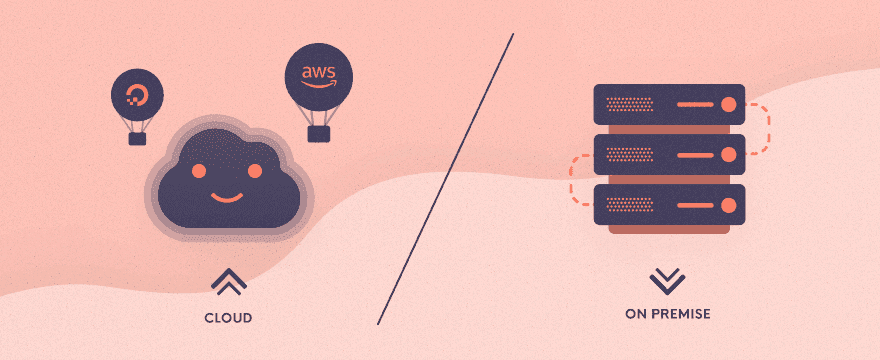
Data management primer: cloud, on-prem and everything in between
17.9.2019
4 min read
What are the standard options for data management? It’s either renting a cloud or building your own on-premise. Learn more about its pros and cons.
Read now
Notes from Meiro Breakfast Session - Data Strategy
14.8.2019
4 min read
"Start with the big picture and have your roadmap. Be prepared for adjustments along the way.” - Quitterie Marque, General Manager, Data Analytics of International SOS
Read now
Meiro Breakfast Session - Driving Customer Experience in the Digital Era
13.8.2019
4 min read
In this session, discover what it really means to deliver a customer experience that really matters.
Read now
10+1 Reasons Why You Should Not Build a Customer Data Platform (CDP)
8.7.2019
9 min read
An idea of building your own customer data platform came into your mind? Have you thought about the risks you will need to expose yourself, the efforts you will need to give, and how much time it will consume? If not, you need to read this!
Read now
Welcome to Marketer's diary!
20.6.2019
2 min read
Meet Vera and her marketer's diary. She will share with you what she has learned trying to get the most out of the customer data. Literally it's a guide through CDP.
Read now
Data Governance & Compliance In Singapore - The Game Changer
16.4.2019
4 min read
Businesses must start to embrace governance and compliance as part of a data-driven culture in order to succeed in digital transformation.
Read now
What does the next decade have in store for the marketers?
15.4.2019
4 min read
One of the key challenges facing marketers is a deep understanding of their customers. If you want to know what marketing experts had to say about marketing trends in 2020, grab a coffee and check out this article.
Read now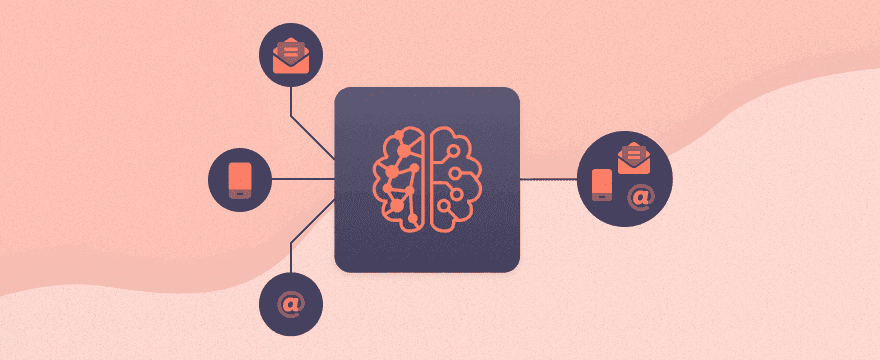
Data-driven Marketing: The Benefits of CDP vs DMP
25.2.2019
4 min read
CDPs and DMPs aren’t competitors, they’re complementary. Here are just a few of the benefits of both CDPs and DMPs.
Read now
Drive better marketing results with Meiro's new consulting partner ADA
14.2.2019
4 min read
Meiro is excited to announce a new partnership with ADA Asia – a data and artificial intelligence marketing agency with a strong presence across multiple markets in Asia (Malaysia, Indonesia, Thailand, Philippines, Singapore, South Korea, Cambodia, Sri Lanka, Bangladesh).
Read now
Singles day & Black Friday - How CDP can help you to do better in 2019
5.2.2019
3 min read
This holiday shopping season, most marketers have probably used customer data for segmentation, personalization, and targeting, but they haven’t used their data to its full potential. Here’s how a customer data platform (CDP) can help you get it right in 2019.
Read now
The Business Value of a Customer Data Platform
8.1.2019
5 min read
The era of personlization is here, but few businesses are getting it right. It’s not their fault, the CDP space has been woefully underserved - but that’s changing. There are now viable CDPs on the market, and the potential for data activation and personalization are near-endless. Here’s how a CDP can improve the way your organization works.
Read now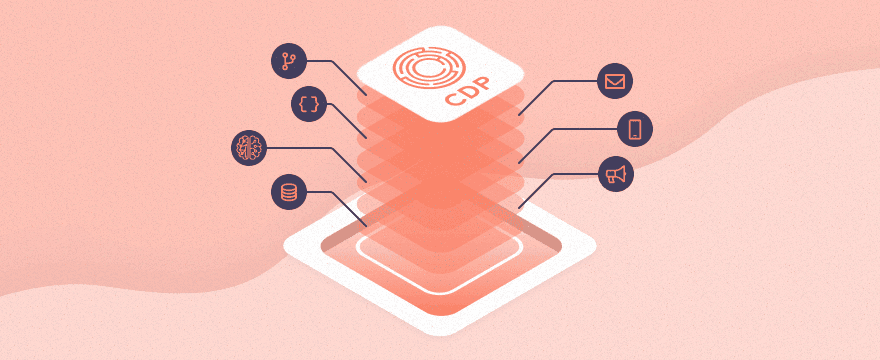
Under the hood of a Customer Data Platform (CDP)
30.5.2018
4 min read
DATA NERD ALERT! So far we have focused on the business problems from the point of view of marketers and business problem owners. In this post, we let you in on the magic that happens under the hood. Our CTO will walk you through our approach to data engineering as connectivity is a critical function of a Customer Data Platform.
Read now
3 Practical Tips To Make Your Remarketing Remarkable Again!
24.5.2018
5 min read
The opportunities with remarketing are endless - offering you a sharpshooter-like precision in targeting to optimize your marketing spend. But the one question you may have is… Where do I begin?
Read now
Meiro and She Loves Data at Big Data World Singapore wrap up
5.3.2018
3 min read
We got a chance to participate in an exciting event we co-produced as part of Big Data World conference in Singapore and we came away impressed, optimistic, enlightened, and more
Read now
Meiro | Our Manifesto
19.1.2017
4 min read
Our team has been working with data for years, and we’ve heard the same refrain time and time again from marketers: They need a real solution to their data problems. They know they have “big” data, they know that they know quite a bit about their customers, but they don’t have the tools to activate that data to actually reach audiences as individuals with unique messages.
Read now
Meiro is here!
3.1.2017
3 min read
We’ve seen far too many companies that are unable to realize the potential of their data - so we decided to do something about it. The result is Meiro, a Customer Data Platform (CDP) that unifies your data, builds rich customer profiles, and creates enriched custom audiences to be delivered to any customer activation platform - with just a few clicks.
Read now